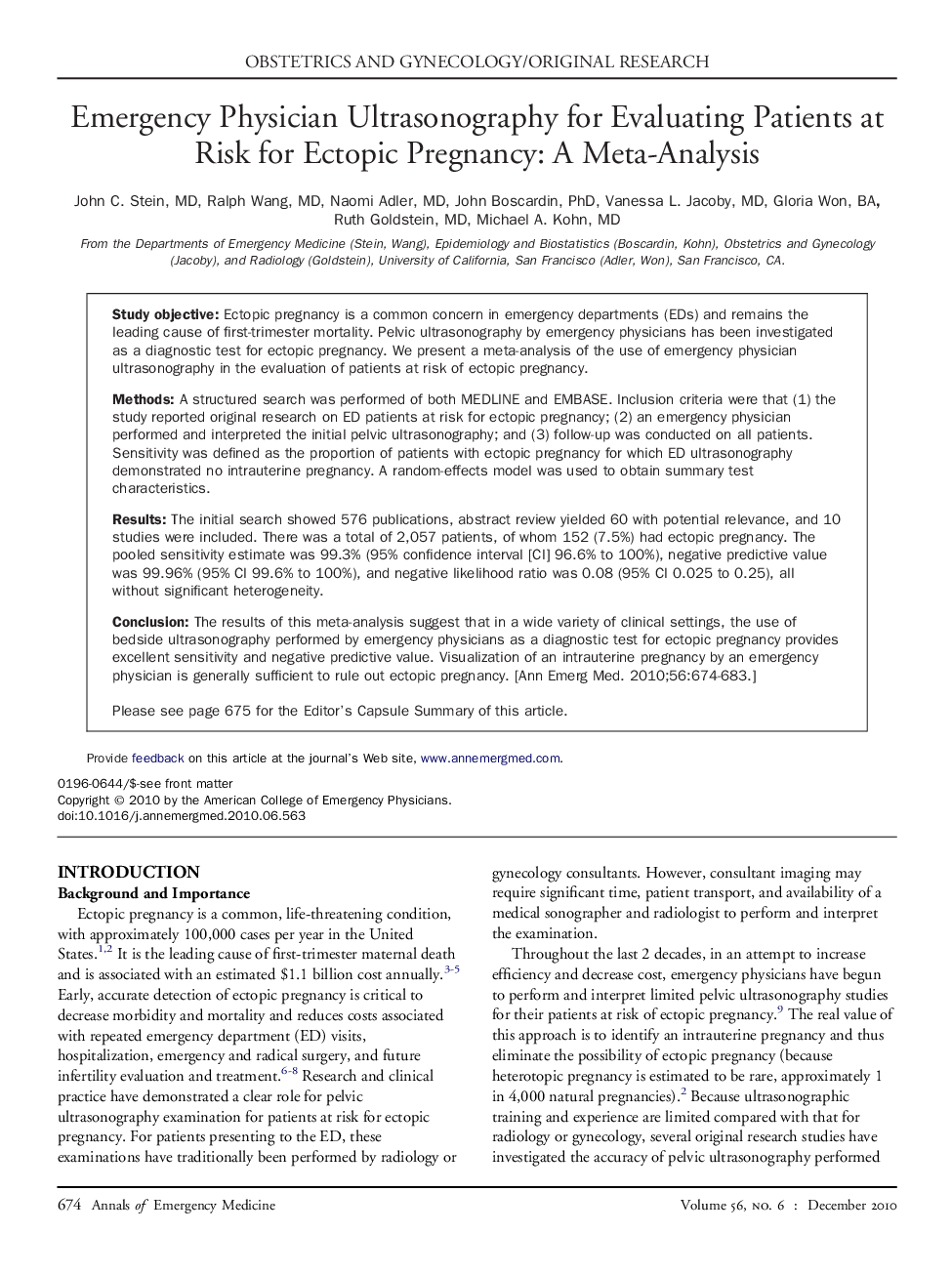| Article ID | Journal | Published Year | Pages | File Type |
|---|---|---|---|---|
| 3231287 | Annals of Emergency Medicine | 2010 | 10 Pages |
Study objectiveEctopic pregnancy is a common concern in emergency departments (EDs) and remains the leading cause of first-trimester mortality. Pelvic ultrasonography by emergency physicians has been investigated as a diagnostic test for ectopic pregnancy. We present a meta-analysis of the use of emergency physician ultrasonography in the evaluation of patients at risk of ectopic pregnancy.MethodsA structured search was performed of both MEDLINE and EMBASE. Inclusion criteria were that (1) the study reported original research on ED patients at risk for ectopic pregnancy; (2) an emergency physician performed and interpreted the initial pelvic ultrasonography; and (3) follow-up was conducted on all patients. Sensitivity was defined as the proportion of patients with ectopic pregnancy for which ED ultrasonography demonstrated no intrauterine pregnancy. A random-effects model was used to obtain summary test characteristics.ResultsThe initial search showed 576 publications, abstract review yielded 60 with potential relevance, and 10 studies were included. There was a total of 2,057 patients, of whom 152 (7.5%) had ectopic pregnancy. The pooled sensitivity estimate was 99.3% (95% confidence interval [CI] 96.6% to 100%), negative predictive value was 99.96% (95% CI 99.6% to 100%), and negative likelihood ratio was 0.08 (95% CI 0.025 to 0.25), all without significant heterogeneity.ConclusionThe results of this meta-analysis suggest that in a wide variety of clinical settings, the use of bedside ultrasonography performed by emergency physicians as a diagnostic test for ectopic pregnancy provides excellent sensitivity and negative predictive value. Visualization of an intrauterine pregnancy by an emergency physician is generally sufficient to rule out ectopic pregnancy.
